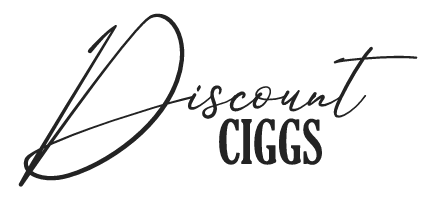The Transformation of Cigarette Sales in Canada Amidst COVID-19
Canada: a realm of breathtaking landscapes, warm camaraderie, and an unexpected resident - cigarettes? Admittedly, the juxtaposition might raise an eyebrow. But before we delve into the role of COVID-19 in reshaping cigarette sales in the expansive Great White North, let's establish a more lucid backdrop.
Setting the Context: Pre-COVID Cigarette Sales in Canada
Much like cigarette markets worldwide, Canada's tobacco industry was already witnessing a decline, propelled by increasing awareness of health implications and a prevailing trend towards decreased cigarette usage. However, the landscape took an unforeseen turn with the arrival of 2020, introducing a twist that caught everyone off guard. This unexpected development can be likened to the sensation of being engrossed in a beloved TV series, only to be blindsided by a plot twist that leaves you utterly astonished. The parallel underscores the element of surprise and the transformative impact of unforeseen events. In the same way that a plot twist reshapes the narrative of a story, the events of 2020 reshaped the trajectory of Canada's cigarette market, introducing novel dynamics that challenged established expectations and encouraged further introspection into societal behaviors and priorities.
The Immediate Reaction: Pandemic Onset
The onset of the pandemic triggered a global frenzy, reminiscent of the exhilarating rush during Black Friday sales. However, in this unique scenario, the frenzy was centered around securing essential items rather than material luxuries. Just as shoppers swarm stores on Black Friday for sought-after deals, people worldwide navigate uncertainty and crowded stores in a quest for vital necessities. The comparison encapsulates the urgency and fervor that swept across societies as they grappled with unprecedented circumstances. This parallel underscores how the pandemic altered conventional behaviors and priorities, transforming routine activities into extraordinary quests for survival. The analogy also underscores the communal nature of these responses, highlighting how a shared understanding of necessity can drive individuals to act collectively and resolutely, akin to the fervor experienced during peak shopping seasons.
Panic Buying and Stockpiling Cigarette sales experienced an unexpected surge in Canada, reflecting a widespread endeavor to stockpile amidst the anticipation of prolonged lockdowns. This trend paralleled the familiar scenario of visiting a store and discovering that your favored chips were unavailable due to high demand. Similarly, the initial phase of the pandemic led some individuals to secure an ample supply of cigarettes, mirroring the impulse to ensure access to a preferred product during uncertain times. The analogy captures the essence of scarcity-driven decision-making, where the instinct to secure essentials manifests in various ways. The unanticipated spike in cigarette sales underlines the interplay between psychological responses and consumer behaviors during times of upheaval, illuminating how concerns about access and availability can impact purchasing patterns. As society navigates the aftermath of these exceptional circumstances, this phenomenon remains a testament to the intricate relationship between external events and consumer dynamics, prompting contemplation about the diverse motivations guiding individual choices.
Restrictions and Their Direct Effects With the intensification of lockdown measures, a considerable number of brick-and-mortar stores shuttered their doors. This closure reverberated in terms of limited access to cigarettes. The situation draws a parallel to the scenario of a favorite local pizza establishment closing down. While the craving might persist, the absence prompts an exploration of alternatives if the desired option isn't readily attainable. In a similar vein, as physical stores ceased operations, individuals faced challenges in accessing their preferred tobacco products, triggering the search for feasible alternatives. This analogy underscores the principle of adaptability in consumer behaviors when confronted with disruptions to regular routines. The shift from a preferred option to an available one, prompted by external circumstances, highlights the resilience and resourcefulness that individuals exhibit in the face of changing dynamics. As the smoke clears from the altered landscape, this instance serves as a reminder of the interplay between convenience, preference, and adaptability within the context of evolving consumer experiences.
Shifts in Consumer Behavior Amidst the widespread confinement, distinct shifts emerged in consumer behaviors. As individuals found themselves confined to their residences, significant changes were observed. For numerous smokers, the experience of being indoors prompted a decisive attempt to quit smoking, capitalizing on the conducive environment for making such changes. Conversely, others navigated this period by seeking innovative avenues to satisfy their nicotine cravings. This dynamic reflects the diverse ways people responded to the altered circumstances, with some utilizing the opportunity for personal growth and change, while others found creative solutions to address their immediate needs. The situation mirrors the spectrum of coping mechanisms and resilience inherent in human responses to challenging situations. As routines were disrupted, this period spotlighted the capacity for adaptation and transformation, embodying the intricate interplay between individual choices, environmental constraints, and the pursuit of well-being within the confined spaces of homes.
The Move Towards Online Purchases The realm of online shopping extends beyond fashion and electronics – it encompasses even unexpected items like cigarettes. The transition to purchasing cigarettes online mirrors the excitement of stumbling upon Amazon for the first time when the universe of online shopping seemed boundless. Just as the discovery of e-commerce platforms like Amazon opened up a world of convenience and possibilities, many experienced a similar sentiment when they realized they could have their tobacco products delivered directly to their doorsteps. This analogy captures the transformative impact of digital shopping, which has progressively evolved to cater to diverse preferences and needs. The pivot to online cigarette purchases underscores the adaptability of consumer behavior, where convenience and accessibility play significant roles in reshaping traditional consumption patterns. As society increasingly integrates digital platforms into daily life, the transition to online cigarette shopping highlights the resonance between technological advancement and the way individuals interact with products and services, expanding the boundaries of convenience in unexpected ways.
Health Awareness and Smoking Amidst the prevalence of a respiratory virus, a wave of introspection prompted individuals to reevaluate their smoking behaviors. This contemplative shift bears resemblance to the experience of consuming junk food daily and subsequently watching a health documentary. Much like the revelation that arises from recognizing the consequences of unhealthy habits, this period became an epiphany for many. The emergence of a respiratory virus heightened awareness about the implications of smoking on lung health, prompting some to confront the reality of their choices. Just as a health documentary can trigger a change in dietary habits by illuminating the adverse effects of poor nutrition, the presence of the virus catalyzed a parallel reassessment of smoking practices. This analogy underscores the transformative power of knowledge and awareness, revealing how a global health crisis can catalyze personal growth and positive changes in behaviors. As individuals navigated this period, the introspection and subsequent adjustments mirrored the way information and insights shape our understanding of well-being and guide us toward healthier choices.
Economic Implications for Tobacco Companies
Tobacco companies didn't bask in uninterrupted success; rather, they faced challenges as trends evolved. The shifting landscape demanded swift adaptation. This transition wasn't a walk in the park, comparable to a world of rainbows and butterflies. Instead, it necessitated proactive adjustments to align with the changing preferences and health-conscious mindset of consumers. The analogy of rainbows and butterflies serves to highlight that the journey wasn't marked solely by ease and positivity. Just as the real world contains complexities beyond idealized notions, the transformation of tobacco companies requires them to navigate uncertainties and hurdles. The necessity for swift adaptation underscores the competitive nature of industries and the intrinsic link between innovation and survival. In this dynamic environment, companies strived to metamorphose, much like a butterfly emerging from a cocoon, navigating the challenges to remain relevant in a landscape where change is an unavoidable reality.
Declining Sales and Revenue Hits Numerous companies witnessed declines in their sales, casting an air of uncertainty over their prospects. This scenario evokes the feeling of encountering a sudden power outage while engaged in a crucial task. The analogy resonates with the abrupt disruption and disarray experienced by these businesses. Just as a power outage disrupts workflow and plunges tasks into darkness, the sales decline blindsided companies, leaving them grappling with unforeseen challenges. The comparison underscores the element of unexpectedness and the consequential need for contingency planning and adaptability. As these companies navigated the unanticipated downturn, the analogy of a power outage serves as a vivid depiction of how the abrupt cessation of normal operations can force a recalibration of strategies and a reevaluation of approaches. Much like restoring power requires quick action and resourcefulness, these businesses sought innovative solutions to reignite their momentum and illuminate a path forward in the face of uncertainty.
Survival Strategies and Market Dynamics Similar to a chameleon adeptly blending into its environment, tobacco companies embarked on a journey of adaptation. This transformative process witnessed a concerted drive toward promoting healthier alternatives and a heightened emphasis on refining online sales strategies. Much like the chameleon's ability to change color to suit its surroundings, the tobacco industry's evolution underscores its responsiveness to shifting trends and consumer preferences. The pursuit of healthier alternatives echoes a commitment to aligning with changing societal norms and health-conscious attitudes. Simultaneously, the shift towards bolstering online sales strategies reflects a recognition of the digital landscape's significance in connecting with consumers and enhancing accessibility. Just as the chameleon's camouflage helps it navigate diverse habitats, the tobacco companies' adaptation reflects their endeavor to navigate the complex terrain of consumer demands and industry dynamics. This analogy encapsulates the dynamic process of transformation as tobacco companies navigate the intricate balance between innovation, consumer well-being, and sustained relevance within a swiftly evolving landscape.
Comparing Canadian Trends with Global Patterns
Amid Canada's distinctive market fluctuations, it remained imperative to adopt a broader perspective. During localized shifts and changes, the significance of understanding the larger context became paramount. It's comparable to appreciating a masterpiece painting - while each brushstroke contributes to the intricate details, stepping back is crucial to grasp the masterpiece's entirety. Similarly, within the intricacies of Canada's market dynamics, recognizing the interconnectedness with global trends and overarching economic influences allowed for a more comprehensive comprehension. This approach prevented getting lost in the minutiae and helped identify underlying patterns and potential ripple effects. By focusing on the macroscopic viewpoint, Canada could navigate the multifaceted landscape with a clearer understanding of the interconnected threads that wove together its unique market journey within the intricate fabric of the global economy.
Canadian Market Nuances In contrast to nations with lenient smoking regulations, Canada stood apart with its stringent rules and health-oriented society, offering a distinct response to the tobacco landscape. This divergence in approach reflects the nation's commitment to prioritizing public health over commercial interests. Just as different paths diverge in a forest, Canada's regulatory framework sets it on a separate trajectory, emphasizing a meticulous balance between individual liberties and collective well-being. The analogy of diverging paths underscores the choices made by Canada to chart a course that safeguards its citizens from the harmful effects of smoking. This divergence isn't just regulatory; it mirrors a broader societal inclination towards fostering a culture that values health and responsible consumption. As the world navigates the complexities of smoking regulations, Canada's unique response serves as an exemplar of a nation's resolve to navigate the delicate balance between personal freedoms and the broader imperative of safeguarding public health.
Worldwide Sales Dynamics during COVID-19 The observed patterns exhibited a spectrum of diversity. While certain areas witnessed a substantial plummet in sales, others, rather unexpectedly, experienced remarkable spikes. This variation in outcomes draws a parallel to the ebb and flow of fashion trends. Just as one might assume that bell bottoms have faded from fashion's forefront, only to witness their resurgence, trends possess an inherent unpredictability. Similarly, the sales trends within different regions, with their distinct fluctuations, underscore the intricate interplay of factors influencing consumer behaviors. The analogy resonates with the dynamic nature of trends, often defying expectations and resurfacing in unforeseen ways. In the realm of cigarette sales, this variance serves as a reminder that external circumstances, cultural shifts, and individual choices can culminate in a multifaceted landscape where patterns evolve independently, manifesting an intriguing and often surprising tapestry of consumption behaviors.
Looking Beyond: Predictions and the Road Ahead
In the aftermath, as the settling dust paints a moment of calm, a collective question echoes in our minds: "What lies ahead?" This contemplative sentiment encapsulates the common curiosity that emerges when uncertainties converge with transformative moments. It's akin to standing at a crossroads, gazing at diverging paths, and pondering the uncharted territories that beckon. The query resonates not with anxiety, but with a sense of anticipation, as it embodies the human drive to seek new horizons, navigate unexplored avenues, and embrace the evolving tapestry of life. The question embodies the spirit of exploration and adaptation, urging us to brace ourselves for a future that, though obscured, promises opportunities, challenges, and discoveries. Just as the settling dust clears to reveal new vistas, our curiosity serves as a compass guiding us forward into the boundless realm of possibilities waiting to unfold.
Long-term Effects on Tobacco Industry The transformation of the industry is evident; the impact of the pandemic has expedited pre-existing trends while ushering in novel ones. The landscape bears witness to a metamorphosis that encompasses both evolution and innovation. This transition is akin to a river, where the currents of change have merged with new tributaries, altering the flow of the industry's trajectory. The pandemic's influence acted as a catalyst, intensifying shifts that were already afoot while introducing unforeseen elements. Just as a river's course is shaped by the confluence of various streams, the industry's transformation is a convergence of ongoing progressions and emergent forces. This dynamic interplay underscores the industry's resilience, adaptability, and responsiveness to the evolving needs and preferences of consumers. As the industry navigates this transformative juncture, the metaphor of a river captures the complex blend of continuity and novelty, reflecting the nuanced interplay of familiar currents and new currents guiding its trajectory into an altered future.
Strategies for the Future Marked by a heightened focus on online sales, decreased consumption, and a drive towards healthier substitutes, the path ahead unfolds with a landscape adorned by innovation and adaptability. The adage "Change is the only constant" encapsulates the guiding principle that propels the tobacco industry into the future. The industry is embracing transformation as a steadfast companion, akin to an unwavering mantra. The shifts towards digital platforms mirror a broader shift in consumer preferences, while the quest for healthier options underscores a commitment to harmonizing traditional products with contemporary well-being aspirations. Just as the ever-changing nature of life remains a constant, so too does the tobacco industry recognize the necessity to evolve in tandem with evolving demands and societal shifts. This sentiment embodies the industry's proactive approach to remain relevant and responsive, embracing the dynamic cycle of change and adaptation. Amidst the challenges and opportunities that lie ahead, this mantra guides the industry's journey into an era where innovation and flexibility define the contours of a shifting landscape.
Conclusion:
The ripple effect of COVID-19 on cigarette sales in Canada serves as a microcosm of the sweeping transformations witnessed on a global scale. In the face of an altered reality brought about by the pandemic, various sectors, tobacco included, find themselves positioned at the forefront of an ongoing metamorphosis. As the world recalibrates norms and habits, the industry dynamics mirror this profound reevaluation. The question arises: could Canada be moving toward a future devoid of smoking? The answer rests within the uncharted terrain of time. This juxtaposition of the national and international resonates, encapsulating the interplay between localized effects and broader trends. Just as the pandemic exposed vulnerabilities and prompted reconsideration, the shifting tides within Canada's smoking landscape mirror the world's collective reconsideration of priorities and habits. The notion of a smoke-free future embodies the broader ethos of the transformation underway, hinting at possibilities that await discovery as societies navigate a changed world, sparking anticipation, and embracing the unknown with an open gaze toward the future.
FAQs
Did Canada see an initial rise in cigarette sales during the pandemic?
Yes, due to panic buying and stockpiling.
How did the pandemic affect online sales of cigarettes in Canada?
There was a noticeable shift towards online purchases due to store closures.
Were there global similarities in cigarette sales trends during the pandemic?
While there were some similarities, regions reacted differently based on their unique circumstances.
Is the tobacco industry expected to bounce back post-pandemic in Canada?
It's uncertain, but the industry will likely see more transformations than a return to pre-pandemic patterns.
What are the predictions for the tobacco industry's future in Canada?
A stronger emphasis on online sales, health-conscious alternatives, and possibly a continued decline in traditional cigarette consumption.
References
- Canadian Cancer Society: www.cancer.ca
- Physicians for a Smoke-Free Canada: www.smoke-free.ca
- Canadian Lung Association: www.lung.ca



